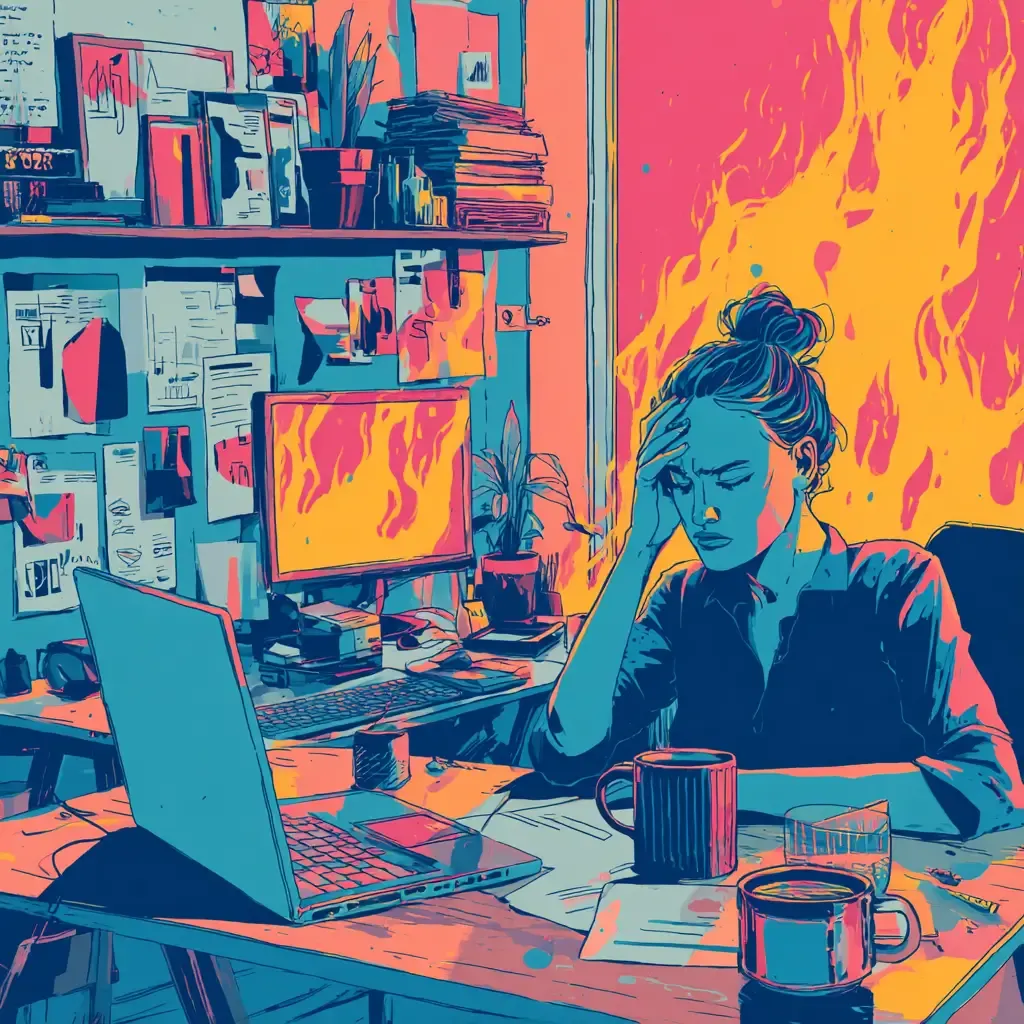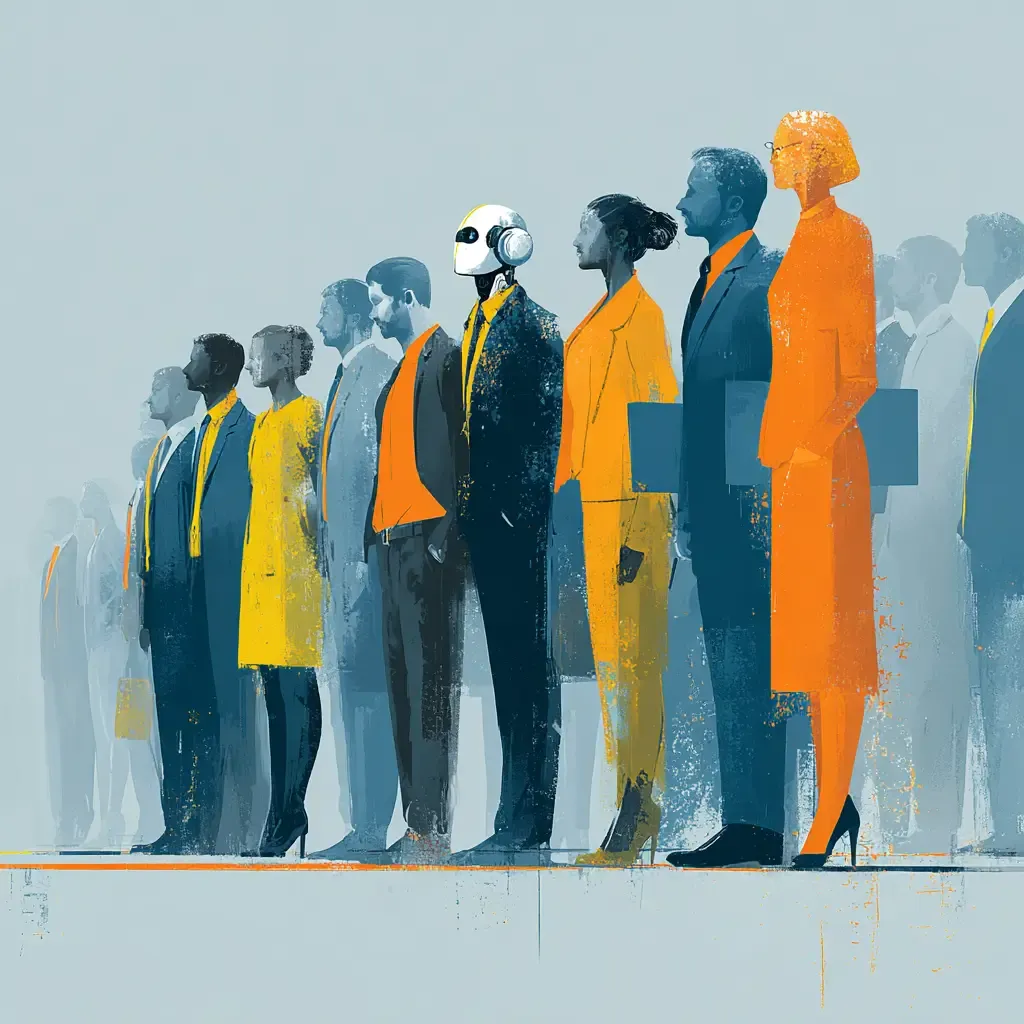Smart energy strategies for side hustlers and new consultants.
TL;DR
Freelancing offers freedom—but it can also lead straight to burnout if you’re not careful. This article shares 10 hard-won lessons on setting boundaries, managing client load, protecting your energy, and building a sustainable solo practice that doesn’t break you in the process.
Introduction: Freedom, With a Catch
Freelancing promises autonomy. Flexibility. Escape from the grind. But anyone who’s actually tried it knows the truth: the freedom is real—and so is the chaos.
You’re constantly toggling between delivery and business development. You’re the strategist and the scheduler, the executive and the assistant. Every "yes" feels like survival, but each one pulls you closer to the edge of burnout.
Especially in the early stages—whether you’re freelancing nights and weekends alongside a full-time job or going all-in as a new solo consultant—the risk isn’t laziness. It’s overcommitment. It’s the belief that burnout is the price of success.
This piece is your guide to working smarter, not harder. It’s a playbook for protecting your time, energy, and sanity—while still delivering exceptional work and building a business you believe in.
1. Reframe the Game: You’re a Practice, Not a Product
Many new freelancers think of themselves as "for hire." But that mindset is a trap. You are not just a pair of hands or a checkbox on someone else's project plan. You’re a practitioner—with a unique blend of expertise, judgment, and values.
Treat yourself like a creative practice or advisory firm. What’s your point of view? What do you want to be known for? What work fuels you vs. drains you?
Shifting from “I take work” to “I curate my engagements” gives you permission to say no, raise your rates, and build a business that lasts.
Try this: Spend 10 minutes writing your “this is what I do and who I do it for” statement. If it feels too general or reactive, it’s time to narrow your lane.
2. Understand Your True Capacity (It’s Less Than You Think)
Freelancers often fall into the trap of measuring capacity by hours available. You might think, “I’ve got 10 free hours this week—I can take on 10 hours of client work.” Wrong.
Client work is just the visible part of the iceberg. Underneath? Admin, proposals, bookkeeping, marketing, context-switching, stress management, and the occasional existential spiral.
Pro tip: Cap your client delivery to 60–70% of your total working hours. That gives you space to run the business and take care of yourself.
If you’re side hustling while working full-time, be even more ruthless. Aim for one strong project, not four scattered gigs.
3. Find Your Sweet Spot, Fast
You can’t freelance sustainably if every gig requires reinvention. Find the overlap of what clients need, what you’re good at, and what you enjoy. That’s your sweet spot.
Framework: Use a lightweight Venn diagram:
- Desirable: What do people pay for?
- Doable: What are you already good at?
- Durable: What energizes you over time?
The faster you identify repeatable, high-value work, the faster you can systematize and scale.
4. Spot the Clients Who Drain You
Burnout doesn’t come from working hard. It comes from working with the wrong people.
Learn to notice the patterns:
- Vague briefings? Expect scope creep.
- Emailing at all hours? Expect boundary issues.
- Bargaining on price? Expect undervaluing.
It’s not just about toxic clients. Even well-meaning ones can drain you if expectations aren’t managed.
Red flag test: If you feel a pit in your stomach after a call, listen to it.
5. Design a Sustainable Workflow
You don’t need a stack of expensive tools. You do need clarity.
At a minimum:
- Calendar for time blocking
- Task manager (Notion, ClickUp, Todoist)
- Folder system for deliverables
- Defined comms: one channel per client (email, Slack, etc.)
Bonus: Automate onboarding and invoicing. Templates and Zapier go a long way.
The goal isn’t perfection—it’s predictability.
6. Protect Your Peak Hours
You have 2–4 peak focus hours per day. That’s it.
Guard them like gold. No client calls. No social media. No checking email. Use them for high-leverage work: proposals, design, writing, strategy.
Try this: Set “deep work” hours in your calendar. Treat them like client meetings—non-negotiable.
You can’t grow your practice if you give your best thinking to everyone but yourself.
7. Set Boundaries Without Apologizing
Boundaries don’t make you difficult. They make you sustainable.
Let clients know:
- When you’re available
- How you prefer to communicate
- What’s in (and out of) scope
- When to expect deliverables
Phrase it like this:
"To keep quality high across all my projects, I batch delivery on Thursdays and respond to email within 24 hours. If something’s urgent, feel free to flag it—but I’ve found this rhythm works well for clients and for me."
No drama. Just clarity.
8. Build for Repeatability
The most successful freelancers don’t reinvent the wheel. They create libraries:
- Proposal templates
- Repeatable packages
- FAQ sheets
- Report templates
- Case studies
Try this: Create a “starter kit” folder. Every time you build something useful, drop it in. Over time, you’ll cut prep time in half.
Bonus: repeatable = outsourceable. When you’re ready to scale, these assets become delegation-ready.
9. Mind Your Identity (And Ego)
Early-stage consultants often overidentify with their work. Every client win feels like a validation. Every mistake? A referendum on their worth.
That’s not sustainable.
Detach your self-worth from client feedback. Protect your creative energy by building a life outside of work—hobbies, friendships, exercise, even boredom.
Mental health tip: Create rituals to open and close your workday. Light a candle. Walk the dog. Listen to music. Anything that separates you from your inbox.
10. Treat Burnout as a System Failure, Not a Personal One
When burnout hits, it’s tempting to blame yourself: I’m just not cut out for this. But burnout is a signal—not a personal flaw.
Ask yourself:
- Where am I out of alignment?
- Where am I overdelivering out of fear?
- What part of my business needs a reset?
Burnout often comes when we abandon our own values in service of someone else’s urgency.
Final reframe: You didn’t leave a traditional job just to create a worse one for yourself.
Closing: You Are the Product. Protect It.
Your brain. Your energy. Your creativity. These are your most valuable assets—and the core of your freelance business. If you let them erode, so goes the business.
You don’t need to take on every client. You don’t need to say yes to every request. You don’t need to grind yourself into credibility.
What you do need: clarity, structure, and self-respect. Build a practice, not a prison. And remember—burnout isn’t a badge. It’s your system asking for a better design.
Final Thought
Freelancing isn’t just about making a living. It’s about making a life that works. The freelancers who last aren’t the ones who hustle the hardest—they’re the ones who learn to work in alignment with their values, their energy, and their goals.
Protect yourself like you protect your clients. You’re worth it.
ChangeGuild: Power to the Practitioner™
One article won’t fix burnout. Here’s part two.

Frequently Asked Questions
Q: Who is this article for?
A: Freelancers, side hustlers, and new solo consultants who are juggling multiple clients, unclear boundaries, and unsustainable workloads—and want to keep doing the work without burning out.
Q: I’m still working full-time and freelancing on the side. Will this still apply?
A: Absolutely. Many of these strategies are even more important when you’re managing limited time and energy. The article covers how to prioritize, set limits, and protect your bandwidth.
Q: Do I need to niche down to avoid burnout?
A: Not necessarily. But you do need to find your repeatable sweet spot—the work you can do well, sustainably, and profitably. That’s what keeps burnout at bay and momentum intact.
Q: What if I’m already burnt out?
A: This article includes recovery cues, but if you're deep in burnout, you might need a reset before trying to optimize. Use it as a framework for rebuilding—not a checklist to hustle through.
Q: Can I work with you directly on this?
A: Yes. If you’re looking for a coach who’s been there, built the burnout machine, and lived to tell the tale—I’d be glad to help. Reach out for a no-pressure conversation.
I Learned the Hard Way—So You Don’t Have To
I’ve pushed too hard, said yes too often, and built a business that nearly broke me. You don’t have to learn the hard way. If you’re juggling too much, losing steam, or wondering if this whole freelance thing is sustainable—let’s fix it.
This post is free, and if it supported your work, feel free to support mine. Every bit helps keep the ideas flowing—and the practitioners powered. [Support the Work]







